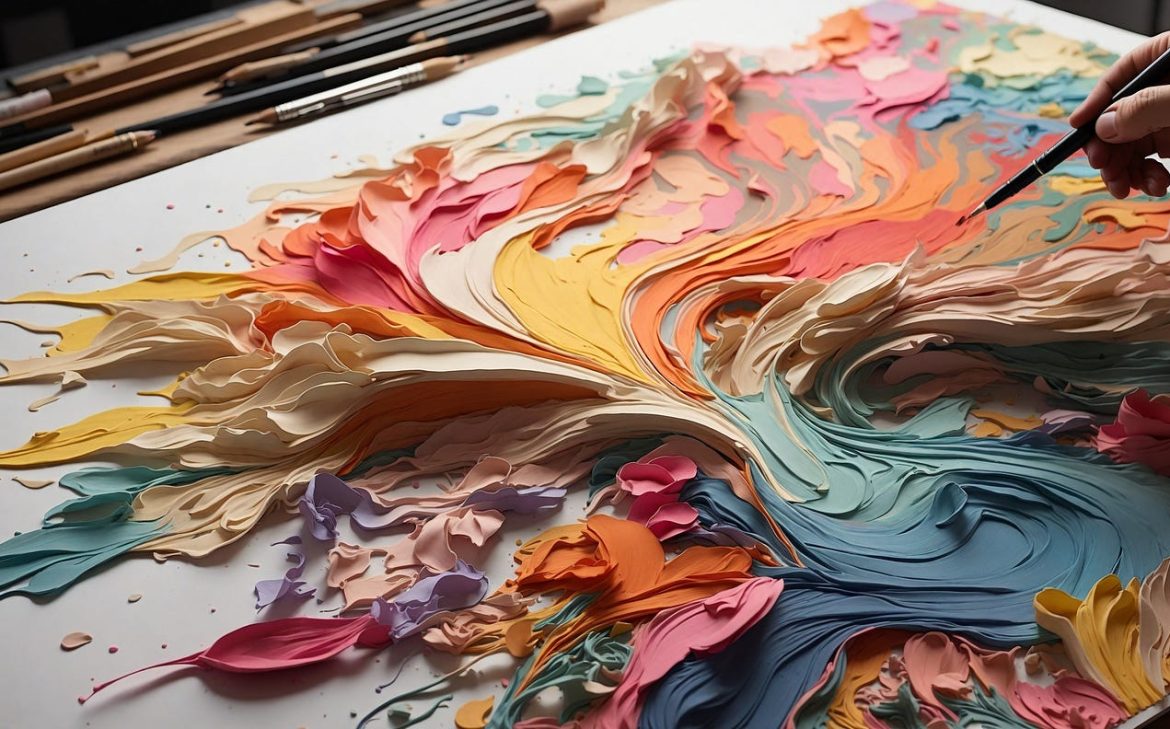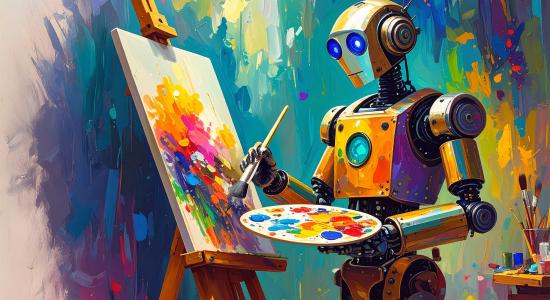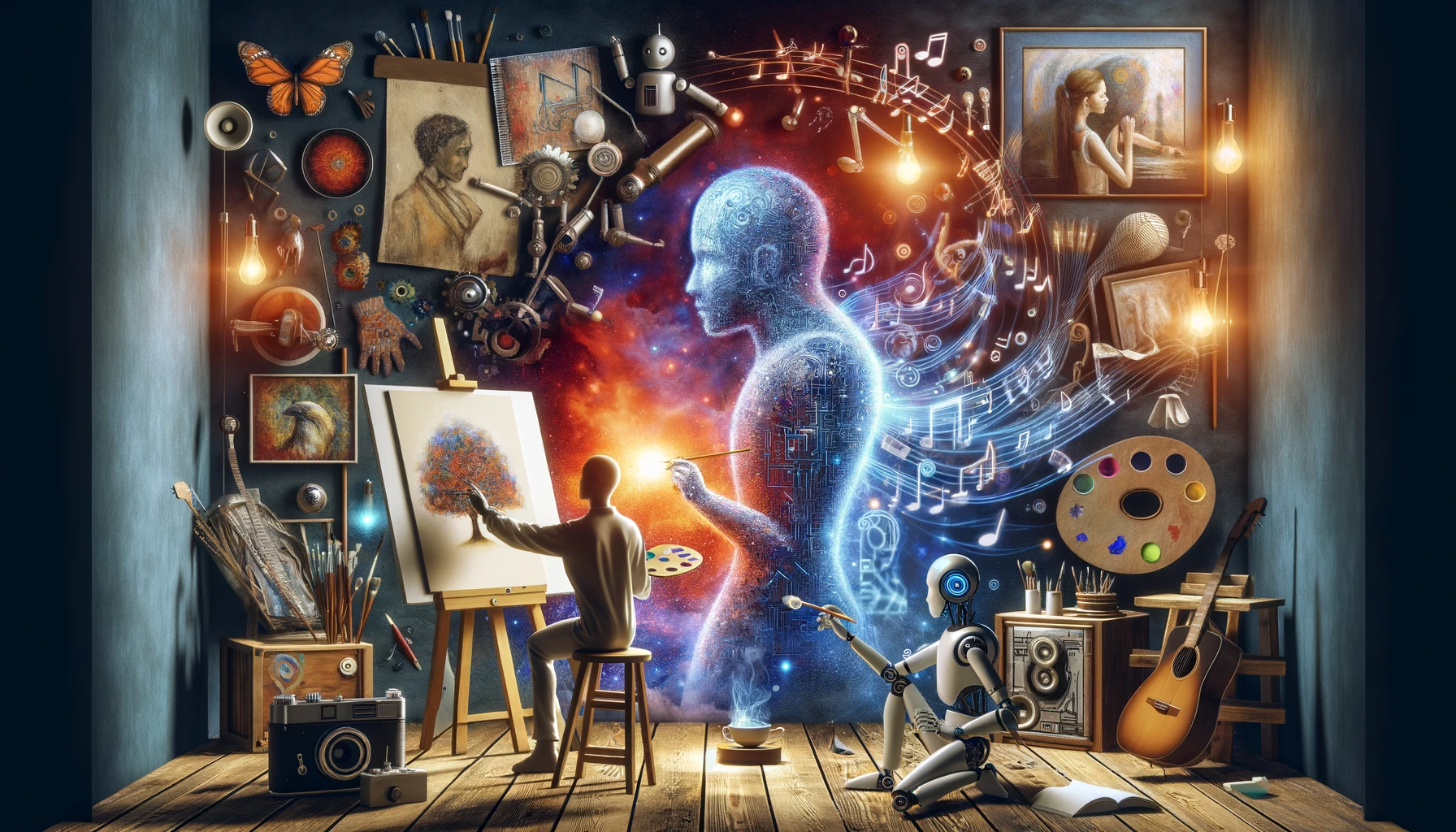Artificial Intelligence (AI) is not just a tool for creating art—it’s reshaping the way art is conceived, produced, and valued. To understand the practical impact of AI in the art world, it’s useful to explore real-world examples where AI has played a central role in artistic innovation, collaboration, and even controversy.
Why Case Studies in AI Art Matter
Case studies offer valuable insights into how artists, institutions, and technologists are using AI creatively and ethically. They also highlight the challenges and possibilities that AI introduces into traditional and modern art spaces.
Notable Case Studies in AI in Art
1. “Portrait of Edmond de Belamy” – AI-Generated Art Auctioned at Christie’s
One of the most famous examples of AI in art, this portrait was created by the Paris-based collective Obvious using a Generative Adversarial Network (GAN).
- What Happened: The artwork sold for $432,500 at Christie’s auction in 2018, marking a historic moment where an AI-generated piece entered the high-end art market.
- Key Takeaway: This case raised critical questions about authorship, creativity, and the commercial value of AI-generated works. Who is the real artist—the algorithm, the programmers, or the collective?
2. Refik Anadol – Machine Hallucinations
Refik Anadol, a pioneer in AI-driven visual art, created a large-scale immersive installation called Machine Hallucinations.
- What Happened: Using AI to process millions of public images of architectural landmarks, Anadol generated evolving digital visuals that were projected onto massive screens.
- Key Takeaway: This case shows how AI can create data-driven, experiential art that interacts with space and memory, pushing the boundaries of digital storytelling.
3. DeepDream – Google’s Neural Network Experiment
Google’s DeepDream project became a viral phenomenon when it used AI to enhance and morph images into surreal, dream-like creations.
- What Happened: Originally developed to visualize how neural networks process information, DeepDream unexpectedly became a creative tool for artists worldwide.
- Key Takeaway: This demonstrates how AI experiments can evolve into cultural and artistic movements, offering new visual aesthetics.
4. The Next Rembrandt – AI Recreating a Masterpiece
In a collaboration between Microsoft, ING, and Delft University of Technology, an AI was trained to study Rembrandt’s body of work and generate an entirely new painting in his style.
- What Happened: The AI analyzed facial features, brush strokes, and color palettes to create a new “Rembrandt” portrait.
- Key Takeaway: This project sparked ethical debates about the replication of iconic artists’ styles and the fine line between tribute and imitation.
5. AI Music Composition – AIVA (Artificial Intelligence Virtual Artist)
AIVA is an AI composer capable of creating emotional music for films, video games, and commercials.
- What Happened: AIVA’s compositions have been used in various professional projects, demonstrating that AI can also play a significant role in music production.
- Key Takeaway: AI’s influence extends beyond visual art into the musical realm, raising similar questions about authorship and artistic authenticity.
Common Themes Across Case Studies
- Authorship and Ownership: Many case studies question who the true creator is—the AI, the programmer, or the person guiding the process.
- Ethical Boundaries: Using AI to replicate established artists’ styles or generate new works challenges ethical norms in the art world.
- Market Disruption: AI is changing how art is valued and traded, especially as collectors and institutions grapple with the role of human creativity in the art-making process.
- New Creative Frontiers: AI is enabling artists to explore concepts, forms, and experiences that were previously impossible or too complex to create manually.
Conclusion
Case studies in AI in art provide valuable lessons about the power and complexity of merging technology with human creativity. They show that while AI opens exciting possibilities, it also demands careful consideration of legal, ethical, and cultural impacts. As AI continues to evolve, the art world must adapt thoughtfully to ensure that innovation and integrity grow together.







Leave feedback about this